Home » Construction Services (Page 3)
Category Archives: Construction Services
Cat Command Expands to 374, 395 Excavators

Operators can now dig, lift and track large excavators from a safe distance at hazardous jobsites or remote locations. Cat Command for Excavating is now available for the 374 and 395 models.
The remote-control system – which can be operated from onsite or hundreds of miles away – provides contractors with three primary benefits:
Enhanced safety: Suitable applications include working on steep slopes, soft underfoot conditions, hazardous material handling and demolition. It also allows production to restart immediately following disruptive processes such as blasting in quarry applications. Increased productivity: Operators can move from one machine or one jobsite to the next with the touch of a button, saving time moving between locations and reducing the chance of falls from climbing on and off machines.A solution to combat the skilled labor shortage: Operators with physical limitations can comfortably run a machine from a station.
Both line-of-sight and non-line-of-sight operating options are available for Command for Excavating.
The Command console is ideal for short-term or emergency remote operation and is worn via a shoulder harness.
“Say you’re running in a safe environment, but you’ve got some work to do on a slope where there is some opportunity for danger,” says Cat product marketing consultant Mike Lenzie. “[The operator] can jump out, switch to remote-control mode, run it with that line-of-sight Cat Command console for an hour or two, and switch back to manual mode and continue operating.”
Using either a 900 MHz or 2.4 GHz frequency communications protocol, the console offers a machine control range reaching up to 437 ft. Built-in safety features stop all excavator movements if the remote shutdown switch is pressed, wireless communication is lost, or the console is tilted more than 45 degrees.
The Command station is a long-term solution for non-line-of-sight operation in an office onsite or a distant location.
“The station itself is set up with a seat that you would see in a Caterpillar piece of equipment. It has displays set up in front of you that mimic the exact display you would see inside the cab,” says Lenzie. “Then we have the ability to set up cameras not only on the piece of equipment but also at the site it’s running to give the operator the ability to visualize what he or she is doing.” Operation distance is limited only by the capabilities of the wireless network.
Users can control up to five different machines from the same or different locations, reducing downtime for shift changes or the need to travel to the jobsite. A touchscreen monitor similar to the in-cab display offers precise machine control, and screen mounts positioned in front of the user provide easy view of the excavator’s camera feeds.
Standard machine technologies including Grade Assist, Swing Assist and E-Fence can be set, activated and deactivated remotely.
West Side Tractor Sales: Designing the Dealership of the Future
“I can truly say I have never worked with a dealer that’s so committed to their customer success, from sales, service support to ownership,” says customer Jon Kaye, who nominated West Side Tractor Sales for Equipment World’s Big Iron Dealer of the Year honor.
The vice president of equipment for Miller Bros. Construction in Archbold, Ohio, continues: “They truly build relationships with their customers, focusing on how they can help grow and bring efficiency to the customer’s business.” Kaye’s experience with West Side began during his time as fleet manager at Gallagher Asphalt in Thornton, Illinois.
That’s just the impact that West Side Tractor Sales, headquartered in Lisle, Illinois, is striving for as it navigates the highly competitive world of construction equipment.
“We make it very intentional to spend an incredible amount of time out with customers and listening to their problems,” says Brian Benck, vice president of sales and a third-generation owner. “We want to serve the person that buys one tractor every 10 years as well as offer tailored solutions to those customers that buy 100 tractors a year.”

West Side’s second- and third-generation family leadership team includes (l. to r.) Steve Benck, Diane Benck, Lauren Coffaro, Jen Snow, Brian Benck and Tom Benck.Established in 1962 by Rich and Mary Benck, West Side now serves as the John Deere dealer in more than 80 counties with 11 locations in Illinois, Indiana and Michigan. Six second- and third-generation owners – all deeply ingrained in the company’s day-to-day operations – now carry on the legacy: children Steve, Diane and Tom Benck and grandchildren Brian Benck, Jen Snow and Lauren Coffaro.
“My father picked a really good partner in John Deere in the ’60s that allows us to be where we are today,” says Diane Benck, vice president of general operations and second-generation owner.
That includes a shiny new headquarters with a state-of-the-art shop. (More on that in just a bit.)
“There’s so much opportunity to have organic growth within our footprint,” Diane says. “I’m not a big believer in buying a lot of territories. I’d rather do something really well, provide bottom-line returns while giving awesome customer service. Being twice as big and making half as much doesn’t serve any purpose. I don’t always think bigger creates the best customer experience, and that’s a priority for us.”
That’s not to say that West Side hasn’t had its share of geographical growth. Rich expanded in the ’70s to four locations in the Chicago area. The second generation added a fifth Chicago-area location and in 2010 acquired five Deere dealerships from Holt Equipment, adding 68 counties in Indiana and three counties in Michigan. New facilities have also been built in Bloomington and Terre Haute, Indiana.
The changing customer
A company that’s now in its third generation has had a front-row seat to changing customer expectations.
“Customers now have an on-demand mentality,” Brian says. “Whether it’s the sourcing of equipment or parts, customers have a much better understanding of their own efficiency, and we’ve had to tailor our model to on-demand. We have to have the inventory and have it ready to go.”
“I think we’ve gotten so much savvier about how we’re engaging customers,” says Lauren Coffaro, marketing and technology manager and third-generation owner. Social media has given the dealership the ability to get quality leads with people it didn’t have a relationship with before.
What hasn’t changed, however, is that relationships still matter, Diane says. “The basic relationship that we foster with those customers is still there.”
“Dealership of the future”
“We wanted the Lisle headquarters to be the dealership of the future,” Lauren says of the facility that opened last year.
“We put a lot of thought into our employee areas,” Diane says. And with an eye toward attracting more women, it put in separate locker rooms and a lactating room.
As it developed plans, West Side scrutinized shop processes, knowing the more time a technician spends working on a machine, instead of ancillary activities like parts runs, the less time the customer has to wait to get the machine back.
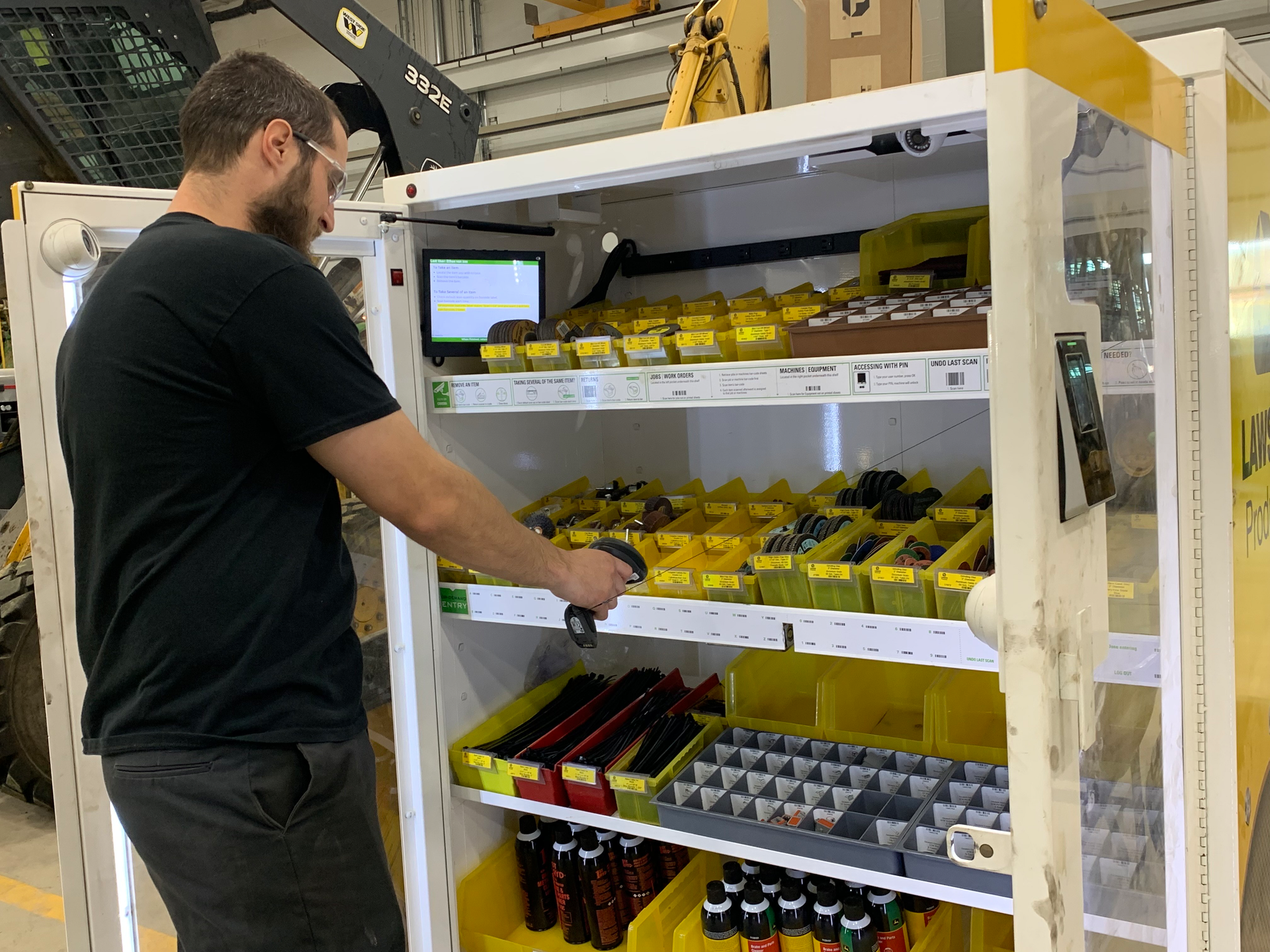
By using the vending machine, technicians are kept in the shop space and the process tightens up billing and inventory management.West Side Tractor SalesTo maximize efficiency, the shop has a vending machine that uses facial recognition to dispense commonly used parts such as zip ties, brake clean, and cleaning and grinding discs. The technician takes what he or she needs, types in a work order, and the supplies are automatically allocated. “By using the vending machine, technicians are kept in the shop space,” Lauren says, and the process tightens up billing and inventory management.
Each technician has a laptop; they can order parts and stay in the bay while parts are located and delivered to a mailbox at each bay, further eliminating wasted technician time. “Those lost minutes add up, especially in a facility as large as Lisle,” Lauren says. “Our service manager is also running a live screen, tracking all the work done each day and the time it is taking to complete a project.”
“We’ve only been in Lisle a year and the service sales are up 20%,” Diane says. The new facility also allowed West Side to add a certified Deere rebuild facility, including a clean room.
The key to staying a leader
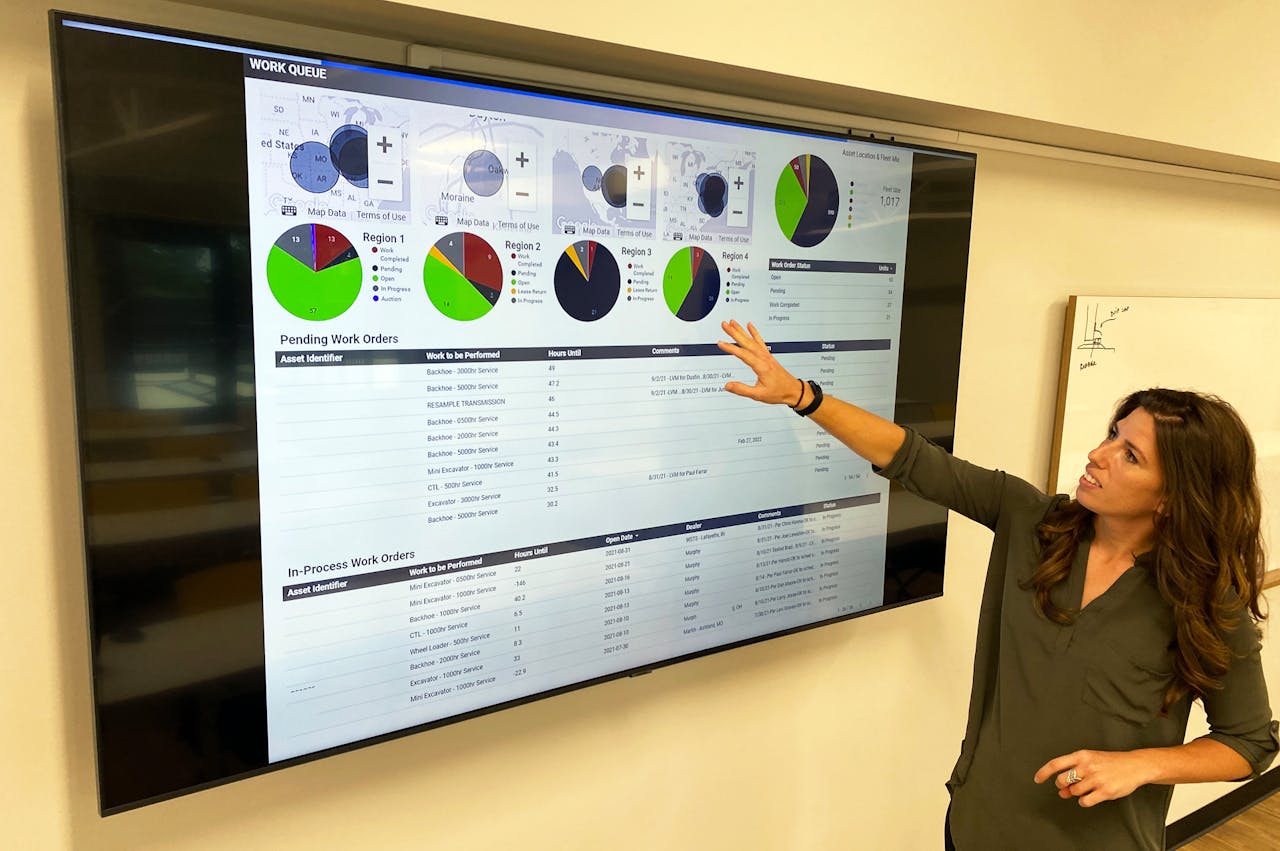
With West Side’s new fleet services initiative, West Side says it offers to “do the heavy lifting in managing our customer’s data.”West Side Tractor Sales
“We’re working really hard on our technology solutions side,” Diane says. “The use of technology is so key to staying ahead of the competition. We usually know what’s going on with their machine before they know it, and we’re calling them proactively.”
West Side established its technology division in 2015. It now offers fleet monitoring (remote support, proactive alert management and JDLink hardware sales), the positioning products (SmartGrade, grade control, off-machine instruments and drones) and its new fleet services initiative.
With fleet services, West Side offers to “do the heavy lifting in managing our customers’ data,” Lauren says. The department grew out of a customer’s request to manage their PMs in different U.S. locations. West Side now manages their equipment data and examines their lease structures. “We know we can apply what we learned in that process to other customers,” Lauren says.
One example is West Side’s new idle time reduction program. “The goal is to grow it into a portfolio of reporting products that we can sell on a subscription basis,” Lauren says.
“Sometimes it’s just listening and then making the extra effort to try to address some things that may not necessarily relate to an equipment sale that helps tie and pull that relationship closer,” Brian adds. “This is an effort to really understand what projects we can work on for customers to help them improve their operations. I see that as a total game changer that most dealers aren’t doing today.”
Noting that it was getting regular requests for basic training on its positioning equipment, West Side also started putting QR codes on this equipment this year, allowing operators to link directly into the dealer’s website and grab a quick tutorial video.
It used to be that the customer relationship was wrapped up in the dealer rep. “We have found that the most successful customer relationships are not about that one person but about creating a team that can jump in to support the customer in many different ways,” Lauren says. “We have true experts, whether in service, technology or production-class machines, that can create that world-class customer experience.”
Overcoming supply-chain shortages
Today’s global supply chain issues are ever-present in frontline operations such as West Side.
“We’ve always been a dealer that stocked more on the heavy side, so going into this we were perhaps in a better position than maybe a lot of dealers,” Brian says. “We kept our inventory levels up and continued to order.”
Used equipment pricing has gone sky high as inventory levels have dropped. “We’ve just had to get creative on how we go out and source equipment, acquiring lease returns, actively purchasing machines on the open market and using consignment programs,” Brian says.
Some pandemic-prompted changes, such as curbside parts pickup, are here to stay, says Lauren. “We had just launched our online parts portal before the pandemic, so it was easy to transition customers over to that tool.” Curbside parts pickups are now in front of all West Side branches.
The pandemic also exacerbated an already shallow talent pool, especially for ever-elusive technicians. In addition to reaching out with social media and forming relationships with tech schools, West Side is focusing on retention by using a new orientation for incoming employees. “The hardest time to keep them is when they’re new,” Diane says. “We want to make sure that they immediately feel part of the team.”
West Side’s employee culture program, Gear Up, has been in place since 2015. “We launched it with the goal of being the number one customer service provider in our industry,” Lauren says.
“We want to create ‘wow’ customer experiences throughout all of our departments. It really had us focus on our core values and creating this content that we now use for recruiting. We’re in a good place now because we have a lot of those facets that were already built out.”
Topcon MC-Max offers an affordable, portable solution for mixed fleets

Machine data is more useful when it can be pulled together for analysis and viewed across a mixed-fleet worksite, and that’s the thinking behind Topcon’s new MC-Max platform.
Designed to adapt to contractors’ machine control and data integration needs as their fleets and workflows expand, the new Topcon MC-Max increases processing power, speed, accuracy, reliability in GPS/GNSS guided earthmoving and sitework, says the company.
Backed by Sitelink3D, MC-Max can be installed on a full range of dozers and excavators. The MC-Max is based on Topcon’s MC-X platform and offers flexible mounting solutions, as well as optional automatic blade and bucket control. The system also provides a full range of positioning technologies from slope control to laser, multi-constellation GNSS*, robotic total station and Millimeter GPS systems. With it, you get a live view of machine positions, activities and onsite progress. MC-Max is also compatible with a wide range of jobsite communication systems.
“With MC-Max, we’ve created a solution that is flexible and can continue to grow as a contractor’s needs and capabilities expand,” says Jamie Williamson, executive vice president, Topcon Positioning Group. “This new solution provides improved scalability and precision in the field and offers business owners real-time data integration, connectivity and resource management capabilities across their entire workflow.”
Topcon positions the MC-X Platform as an easy-to-use and affordable machine control solution. The platform provides seamless data with mixed fleets by interacting with multiple versions of 3D-MC. Sitelink3D is the company’s real-time, cloud-based data management system.
*Multi-constellation GNSS systems are machine control platforms that receive positioning signals from multiple satellites in orbit around the earth. The more satellites a system can “see” the better the data and the less likely a system will lose the satellite connection.
Did you miss our previous article…
https://constructionosa.org/?p=1028
Chevy’s First Silverado ZR2 Catches Air – and Attention – in Video
So it doesn’t have enough dinosaur DNA to dominate the Ram TRX or Ford Raptor. Nonetheless, Chevy’s first ever Silverado ZR2 is taking flight with more power and suspension at the wheels.
In a video on Chevy’s website, the 2022 Silverado ZR2 is shown going airborne on an off-road course. While it’s hard to say exactly how much air the front tires get — it may around a foot or so — it’s still air, and as far as we know, it marks the first time Chevy has shown one of its half-tons taking on a jump. (To watch the video, scroll to the end of this story.)
While videos in the past have highlighted towing and payload capacities and bed strength, a new focus on truck jumping has emerged as yet another and more dramatic way to show off a truck’s power and muscle. And let’s face it…it just looks like fun.
And all that fun requires some power. The Silverado ZR’s 420-horsepower 6.2-liter V8 delivers 460 pound-feet of torque through a 10-speed transmission. While that’s Chevy’s most powerful Silverado yet, it’s still below the 2021 Raptor, which delivers 450-horsepower and 510 pound-feet torque through a 3.5.-liter V6 mated to a 10-speed transmission. And it’s far below the 2021 Ram TRX, with its soul-stirring 702 horsepower supercharged V8 that churns out 650 pound-feet of torque through an eight-speed ZF automatic.
But I’m not so sure Chevy’s all that bothered about being in third place. While we’ll have to wait until the price is revealed, I’m betting that Chevy will be offering a more affordable, high-performance half-ton that could draw some folks away from the Raptor and TRX. And once it’s in the aftermarket, someone’s going to bolt on a supercharger to help even the score. Look for the 2022 Silverado ZR2 at dealers this spring.
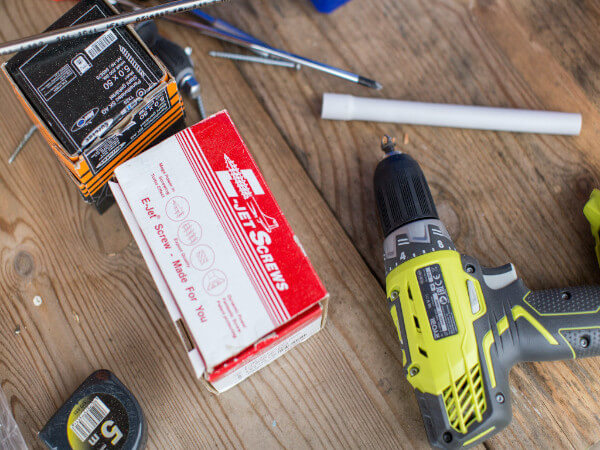
The 6.2-liter V8 delivers 420 horsepower and 460 pound-feet of torque.Chevy
2022 Chevy Silverado ZR2 highlights
· Standard 6.2L V-8 engine, delivering 420 horsepower and 460 pound-feet of torque mated with a 10-speed automatic transmission.
· Silverado-first application of Multimatic 40mm DSSV spool-valve dampers, which feature three separate spool valves to control damping and three connected chambers for fluid flow.
· Uniquely tuned springs that, with the Multimatic dampers, increase maximum front and rear suspension travel, compared to the Silverado Trail Boss.
· Front and rear e-lockers.
· Specific off-road chassis and suspension calibrations, including Terrain Mode, which allows one-pedal rock crawling.
· 18-inch wheels with LT275/70R18 Goodyear Wrangler Territory M/T tires.
· Unique skid plate package.
· New high-approach steel front bumper designed for off-road strength, durability and clearance that enables an improved 31.8-degree approach angle compared to other Silverado off-road models.
· Max payload of 1,440 pounds.
· Max towing 8,900 pounds.
ir-catching video and more photos
Check out this video below of the 2022 Chevy Silverado ZR2 catching air:
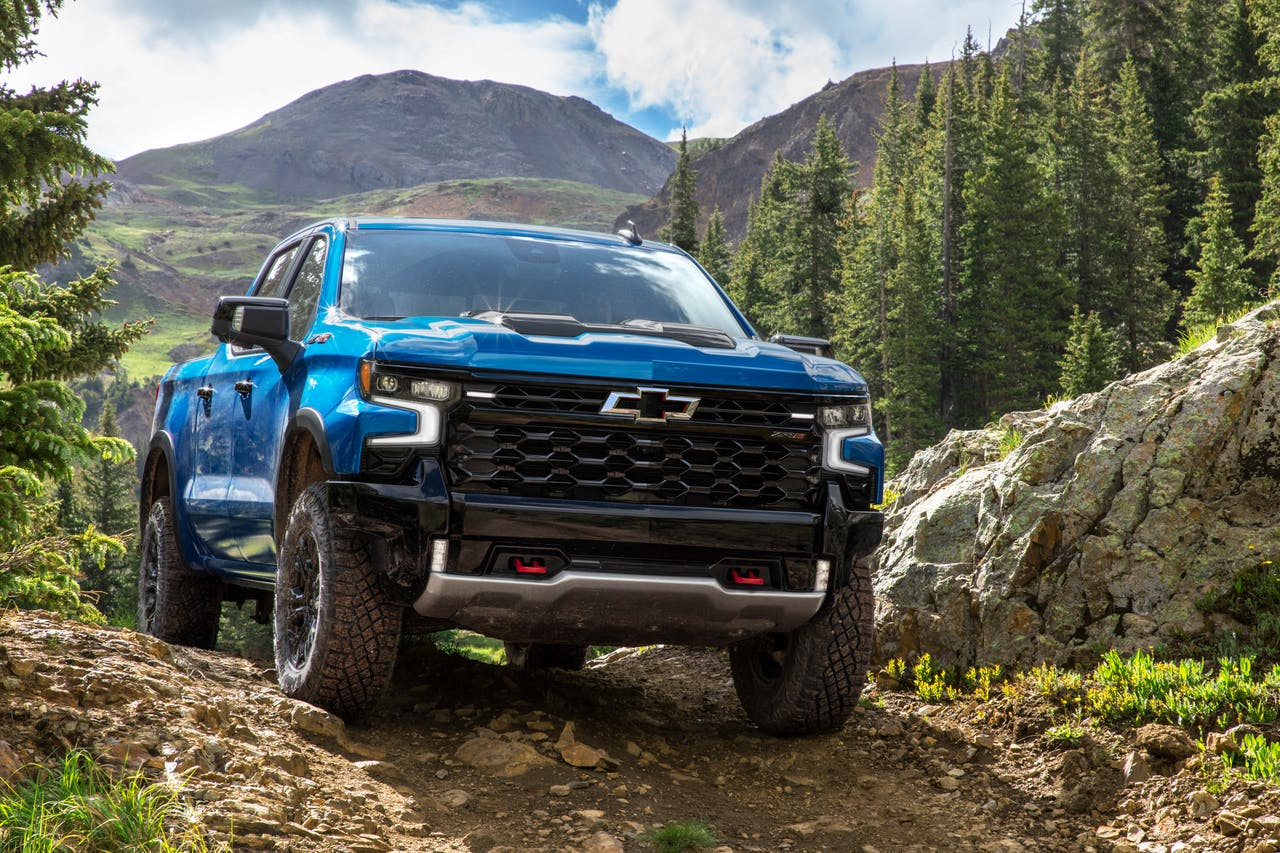
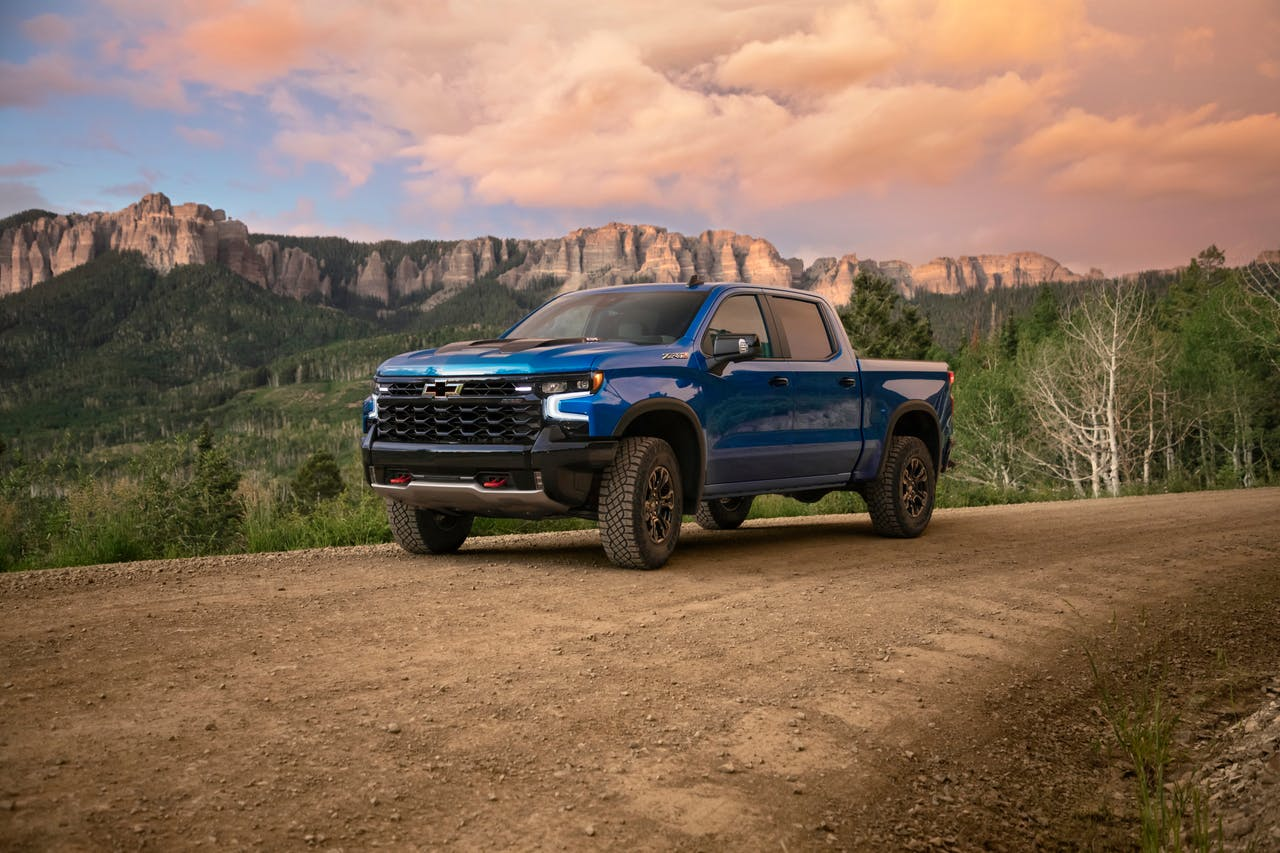
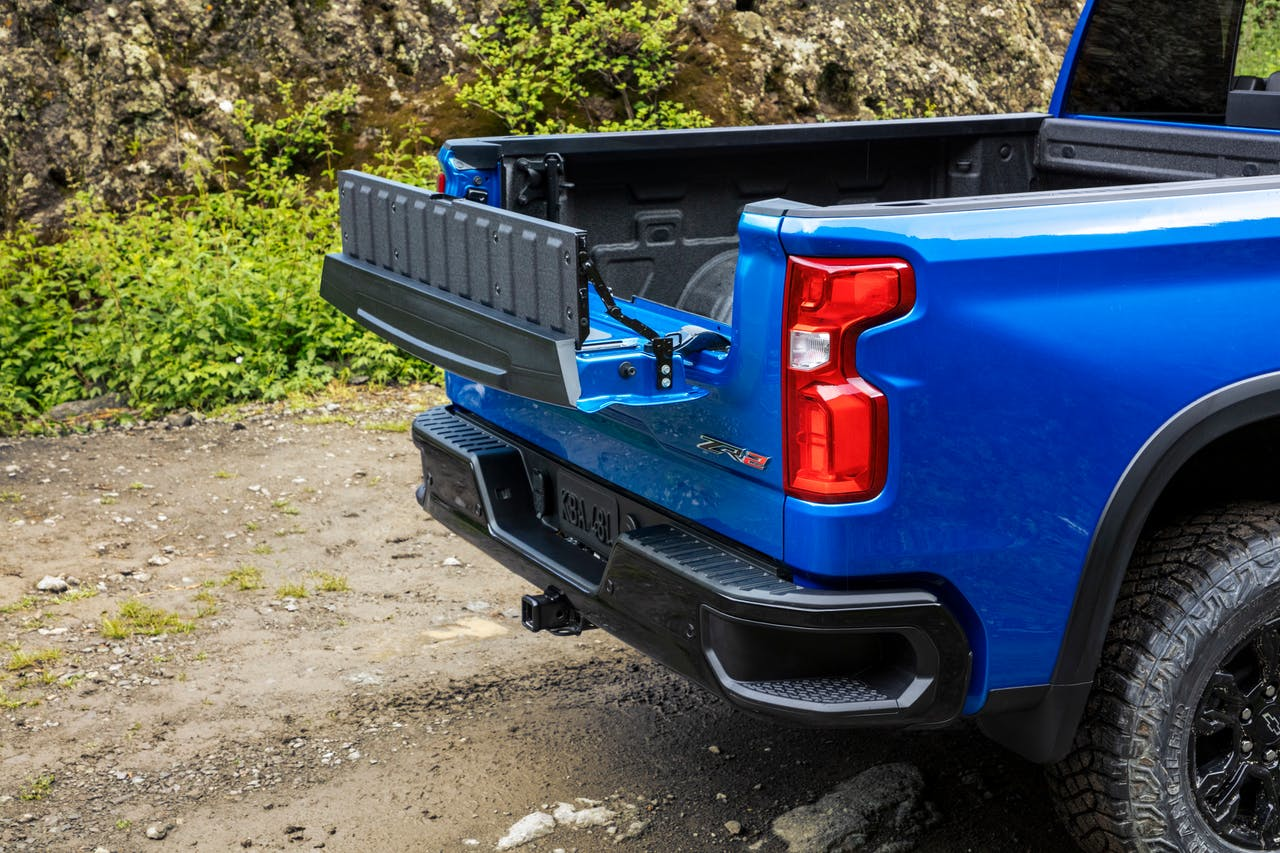

Did you miss our previous article…
https://constructionosa.org/?p=1009
Demolish 8-Story Buildings with New Cat 340 UHD Excavator
Cat has unveiled a new demolition excavator, the Cat 340 UHD – as in, Ultra High Demolition.
The new tall boy boasts a pin height 13 percent higher than the 340F UHD, giving it the ability to perform demolition on buildings as high as eight stories. Another plus: the 340 UHD has a coupling system that enables you to switch between two UHD fronts and the shorter retrofit booms and sticks with no special tools in as little as 15 minutes.
“This is a purpose-built, dedicated demolition machine,” says James Cole, product application specialist. “We are not just throwing a long front on a standard excavator. It has a reinforced frame, a heavier counterweight and the best working weight in the industry in its size class.”
Cat also spent time engineering the new demolition excavator to be easier to transport. A hydraulically actuated variable gauge undercarriage extends from 9 feet 10 inches in the transport mode to 13 feet 4 inches for stability in the working configuration. And an optional one-piece cradle for the boom can be used to reduce the UHD boom transport height to less than 9 feet 10 inches.
Multiple Boom, Stick options
The new 340 UHD allows for the sticks to be configured with Cat couplers to optimize machine versatility and productivity. There are two front options available:
The 72-foot 2-inch front offers a maximum 8,160-pound capacity (3.7 tons) at stick pin and maximum horizontal reach of 44 feet 5 inches at stick nose over the front and side of the machine. Working with a 7,280-pound maximum weight at stick pin, the 82-foot front offers a 43-foot 9-inch maximum reach at stick nose over the front and side of the machine. It matches the Cat MP332 and MP324 multi-processors.
Three stick options are available in lengths of 9 feet 2 inches, 10 feet 6 inches, and 12 feet 10 inches. The maximum digging depth for the machine is 24 feet 3 inches.
Hydraulic Quick Connect
The UHD’s hydraulic boom lines are quickly connected and disconnected by hand and without special tools. Contractors can choose between one- or two-piece boom options for high-productivity truck loading or low-level demolition work.
Standard Cat Payload provides on-the-go weighing and real-time estimates of the payload, so operators can achieve precise load targets when working with the one-piece retrofit boom.
The power for this demolition excavator comes from a Cat C9.3 engine rated at 311 horsepower that can run on diesel or B20 biodiesel. Three power modes — power, smart and eco — match the engine and hydraulic output to job needs to lower fuel consumption. A new high-efficiency hydraulic reversing fan cools the engine on demand to also help with fuel efficiency.

Safety alerts warn the operator when the machine is getting close to its operating limits.CaterpillarSafety alerts
The new 10-inch touchscreen monitor in the 340 UHD displays Cat’s active stability monitoring system. This continuously informs operators if the work tool is positioned within the safe working range and provides audible and visual warning alerts when approaching the stability limit.
Cat increased the seat size by 5 percent and included a left-hand tilt-up console for easier entry and exit. Customized, programmable settings and joystick button controls can be stored on the monitor based on operator ID.
No neck strain
A 30-degree tilt-up cab gives you a comfortable sight line without neck strain when working on tall structures and buildings. And to better help you see that work tool eight stories up in the air, the UHD front is work-tool camera ready.
Cat E-fence and Cat Grade with 2D automatically guide depth, slope and horizontal distance to grade through the monitor. And the machine automatically compensates for excavator pitch and roll caused by sloping ground conditions through use of GPS and GLONASS systems.
Quick Specs
Engine: Cat C9.3BNet power – ISO 14396: 311 hpOperating weight: 122,400 lbs. (2); 130,600 lbs. (1)Max. weight at stick nose: 7,289 lbs. (2); 8,160 lbs. (1)Max. pin height at stick nose: 82′ (2); 72’ 2” (1)Max. digging depth (3): 24’ 3”
*Net power advertised is the power available at the flywheel when the engine is equipped with fan at minimum speed, air intake system, exhaust system, and alternator, and tested per the specified standard in effect at the time of manufacture.
22-m UHD front25-m UHD front1-piece Retrofit boom bent and R 12’10” (3.9 m) stick
Did you miss our previous article…
https://constructionosa.org/?p=991
Genie’s New GTH-1056 Lifts More for Less Cost
How do you make a popular design even better? Genie set out three goals to meet with its new GTH-1056 telehandler. It had to deliver a lower cost of ownership, more lift capacity and a stronger design.
Based on the features found in the older GTH-636 and GTH-846 models, the GTH-1056 offers a boom and chassis that is 30 percent stronger than previous models. The boom’s mid-point pivot uses a single lift cylinder combined with a wider, stiffer horsehead to efficiently transfer weight in high-stress applications, such as handling pipe or suspended loads.
The GTH-1056 lifts up to 5,000 pounds to a height of 56 feet 7 inches and 3,000 pounds at a maximum reach of 42 feet. A 120-horsepower Deutz engine and four-speed transmission serve as the muscle behind this machine. The combo gives you 23,110 pounds of drawbar pull and a top speed of 18 mph.
There’s also a 74-horsepower Deutz engine option with a three-speed powershift transmission or continuously variable transmission. According to the company, the 74-horsepower version delivers performance on par with the larger engine but offers a lower cost and better fuel efficiency. And because it runs without the need for regular refills of diesel exhaust fluid, the 74-horsepower version reduces maintenance time.

Large tread bars in the middle add durability and aggressive tread blocks on the edges improve traction with Genie’s A/T hybrid tires.GenieTo keep you moving through wet or muddy soil conditions, the GTH-1056 delivers power to the wheels through limited slip differentials on both the front and rear axles that automatically deliver torque to the wheels that are slipping.
Tires are always a big part of the operating costs of any machine. To help keep this cost low, Genie developed a new Enduro A/T hybrid tread design for the GTH-1056. The tread pattern on the tire combines the best characteristics of rock lug tires and conventional rough-terrain tires. A wide center bar resists wear on hard surfaces, and self-cleaning outer lugs power through soft, muddy ground without becoming clogged. According to the company, its Enduro A/T tires also provide one-third longer wear before replacement is needed.
Improved hose routing, chain retention, slide-in wear pads and hydraulics-free axles also reduce maintenance costs.
Cat Expands it Remote-Control Command D5, D6, D7 Dozers
Cat D5, D6 and D7 dozers have now joined wheel loaders and excavators as Cat Command machines. Command for Dozing removes operators from the cab and gives them the ability to operate the machine using either a line-of-sight, over-the-shoulder remote console or a non-line-of-sight station.
“We now have the broadest range of remote-control offerings in the industry between our product line and our two scalable offerings of the Cat Command station and console,” says Mike Lenzie, product marketing consultant.
By getting operators out of hazardous environments, Cat says its Command system promotes safety, increases production and helps attract and retain skilled operators. “We can always replace the machine, but we cannot replace the person,” Lenzie says.
Applications where Command could offer safety advantages include steep slopes, underfoot conditions that are so soft the machine could potentially sink into the ground, demolition — especially when there’s the chance of falling debris and working around hazardous materials.

Using the Cat Command station, operators can switch between three different types of Command-enabled machines.CaterpillarBecause operators can easily switch between Command-enabled machines in the Cat Command station, users can see increased productivity. “They can be operating one machine and then with a touch of a button operate another piece of equipment,” Lenzie says.
Cat’s next-generation D5, D6 and D7 come remote ready from the factory; dealers can quickly install remaining components in the field. The Command components are fully integrated with the machine’s electronic and hydraulic system.
As previously mentioned, Command for Dozing comes in two versions:
The console provides access to all dozer functions and supports assist technologies such as traction control, AutoCarry and stable blade. Operators can switch between Command-enabled machines by changing out an RFID chip. Using the console, operators can control a Command dozer up to 437 yards away. The machine shuts down if the remote shutdown switch is pressed, wireless communication is lost or the console is tilted more than 45 degrees.The non-line-of-sight station, where the operator can be in a climate-controlled environment and control the dozer from close by or several miles away. Station controls operate all three types of Command machines – dozer, excavator and wheel loader – and feature pedals, joysticks and an adjustable seat. Multiple screen displays offer visuals from the left and right dozer cutting edges, blade top-center and rearview/ripper. In addition to the assist technologies offered on the console, the station is compatible with blade load monitor, slope assist and Grade with 3D.
Did you miss our previous article…
https://constructionosa.org/?p=960
Industry Roundup: McCoy Group purchases Erb Equipment, extending construction and forestry reach
McCoy Group has purchased eight John Deere Construction and Forestry stores from Erb Equipment Co., expanding its organization into Missouri, Indiana and Kentucky. McCoy plans to retain the 200+ current Erb Equipment employees as part of the acquisition.
Based in Dubuque, Iowa, the new McCoy Construction & Forestry locations will join an organization that is already home to six subsidiaries, including Midwest-based Freightliner dealerships Truck Country and Stoops, and bulk tank transportation companies, Foodliner, Quest Liner and W.W. Transport.>
Vermeer Texas-Louisiana becomes Fecon dealer
Vermeer Texas-Louisiana is now a Fecon dealer. With 13 locations throughout Texas and Louisiana, the company will sell and service Fecon’s line of forestry mulching tractors and attachments. The offering will complement their full lineup of Vermeer branded forestry equipment.
National Equipment Dealers LLC named Dynapac dealer
National Equipment Dealers LLC is expanding its current footprint for Dynapac products into North and South Carolina. The expanded partnership with the compaction and paving equipment manufacturer creates access to new, used and rental equipment along with product support in the region. This will add to NED’s existing footprint of Dynapac products in Florida.
RB Scott Equipment opens Minnesota location
RB Scott Equipment, a specialized dealer of process equipment and wear parts for the sand and gravel, crushed stone, frac sand and recycling industries, opened a new location in Clearwater, Minnesota on October 26. Major lines include Metso, Superior, StraightLine, MDS and Atlas Copco. The company is headquartered in Eau Claire, Wisconsin and serves Wisconsin, Illinois, Minnesota, North Dakota and South Dakota.

Messick’s Equipment will parade 100 pieces of machinery to its new location on November 20.Messick’s EquipmentMessick’s Equipment Prepares for Move with Tractor Parade
Rural Pennsylvanians are afforded a unique opportunity to view a “tractor parade” as Messick’s Equipment moves approximately 100 pieces of equipment from its current location in Elizabethtown to its new location in Mount Joy. The public is invited to observe as 100 customer volunteers help move the inventory along the seven-mile route.
Messick’s Equipment plans to start serving customers at the new location prior to Christmas 2021. The new location will offer increased equipment displays, consolidation of all parts inventory, additional parking, year-round training and educational opportunities and more.
MANUFACTURERS, SUPPLIERS
CemenTech expands production, staffing
CemenTech says its added a second production shift and is increasing its staffing levels by more than 25 percent to keep up with growing demand for volumetric concrete mixers. In addition to hiring, the company also is investing nearly $3 million to upgrade facilities, equipment and technology.
The lowa-based company made the strategic move after its sixth consecutive year of double-digit sales growth. CemenTech’s volumetric mixers enable contractors to mix their concrete on the jobsite to exact specifications for the job at hand.

Lindmeyer takes over the region previously served by Daniel “Boone” Larsen, who retired in May 2021.Felling TrailersFelling Trailers names Joel Lindmeyer Regional Sales Manager
Felling Trailers has named Joel Lindmeyer as regional sales manager for the Great Lakes region. Lindmeyer will be responsible for all sales development, activity and dealer support within Minnesota, Wisconsin, Illinois, Michigan, Indiana, Ohio and Kentucky in his new role.
Lindmeyer brings more than 25 years of experience in the truck and trailer industry and previously held sales and customer service roles at Monroe Truck Equipment and Big Rivers Ltd.
Felling Trailers is a national industrial and commercial trailer manufacturer.

Shain Wells will help facilitate continued growth for JCB, as the market for construction equipment has rebounded significantly after the impact of the COVID-19 pandemic.JCBJCB taps Shain Wells as new Operations VP
JCB North America has announced Shain Wells has been hired as vice president of operations. In his new role, Wells will oversee the production of JCB machines for the agriculture, construction, industrial and military divisions, including skid steer loaders, compact tracked loaders, telehandlers and backhoe loaders. This includes design and development, purchasing and logistics, manufacturing operations and quality.
Prior to joining JCB North America, Wells served in management and executive roles at Wabash National Corporation and Chrysler.
Did you miss our previous article…
https://constructionosa.org/?p=937
B2W’s One Platform Streamlines Equipment Inspections, Repairs
B2W Software has introduced a new API within its One Platform that streamlines equipment inspection and repairs and also ties together inspection and maintenance software with its other applications.
An API (Application Programming Interface) is a software program that allows two other separate software applications to talk to one another in a common language. With it, information in one application can automatically populate fields in another application.
The B2W Maintain equipment maintenance application within the One Platform can now generate repair requests automatically based on data from electronic forms used for completing equipment inspections. The process relays detailed information from equipment inspections to the maintenance team immediately. By eliminating lag time and manual steps for transferring this data, contractors can identify and complete equipment repair work more efficiently and break down information silos in their company.
“Along with the equipment maintenance module and the B2W Inform module for e-forms and reporting, the B2W platform includes applications for estimating, field tracking and resource scheduling,” says Greg Norris, marketing communications director. “When all of these are managed cohesively, there’s a tremendous opportunity for more efficiency.”
Going paperless

B2W’s inspection form can be set up to share data with maintenance and other applications instantly and automatically.B2W
In addition to enabling the different applications to talk to one another, B2W says its portfolio of products enable construction companies to run their business without generating mountains of paperwork. Paper forms slow down the flow of information, and it’s a difficult, manual process to build reports, identify trends and track KPIs, says John Kane, product manager. “Electronic forms make it faster and easier to capture better data and to make that data actionable.”
In a paper-based equipment inspection process, a form identifying repair needs might go from an operator to a foreman or supervisor, says Norris. The form could sit in the truck until the supervisor gets back to the office and then go in a stack that the shop may not get to for another week or two.
With a paperless system as soon as you hit the send button, the maintenance shop knows instantly and can make decisions that day on what priority to give this repair.
Customization
The B2W Inform e-forms application is customizable says Kane. “You can even recreate your old paper forms in a digital format and pick up where you left off to use the product right away. A shop manager might create the equipment forms. Other managers or administrators might create various forms for safety, HR and other requirements.”
One of the advantages with the electronic equipment inspection forms is they can be specific to each piece of equipment, says Norris. “With paper, because it was so hard to manage, you might use a general equipment inspection form. But each piece of equipment has its own unique things that you may want to inspect. With the electronic forms you can create a form for every category of equipment versus using a generic form across all equipment. And this has clear advantages in terms of the quality of data, you collect.”
Implementation
Setting up a construction company with B2W Maintain, including the paperless inspection process takes some time and effort, but says Kane, it’s not rocket science.
“If you have B2W for estimating and field tracking and you add B2W for equipment maintenance, you have the operational database mostly in place,” says Kane. “There’s a continuity there as opposed to choosing an equipment program from a third party. “You’re part of the way there already.”
The implementation of the maintenance software at that point is much less cumbersome simply because your equipment, your users and resources are in the system, says Kane. “It’s basically adding more detail about the equipment and adjusting your maintenance processes to optimize the software.”
“Some contractors buy the whole B2W platform at once, and some people buy a module at a time,” says Norris. “With the B2W Inform application, we have a library of basic forms you can use as a starting point. It’s a drag and drop process. It’s not something you need an IT department to do. Almost anybody can create forms and build reports.”
Timelines
B2W training and implementation teams work with contractors to get them up and running says Kane. The training and implementation timeframe will depend on type and number of B2W applications as well as the complexity of the data you want to manage.
“From customer to customer, every data set can be completely different,” says Kane. So we implement the product based on their business needs and how they want to do business and train towards that. We do a lot of analysis upfront. This gives them a product at the end that is very specific, familiar, and allows them to hit the ground running.”
Did you miss our previous article…
https://constructionosa.org/?p=914
Cat Boosts Power, Speed on New 304, 305 CR Compact Excavators
Completing its family of Next Generation compact hydraulic excavators, Caterpillar unveiled the reengineered 304 and 305 CR.
Cat says both machines deliver up to a 20 percent increase in performance with up to 10 percent lower owning and operating costs compared with previous models.
“The technology we’ve put in these machines gives us a base for growing and expanding the offering even further,” says Greg Worley, Cat product expert. “We don’t end here. We’ll continue to grow and develop these machines with some of those technologies you see in the larger Caterpillar world.”
Cat now offers 17 compact excavator models ranging from the 1.5- to 10-ton size class. Common features and a consistent control layout across the range make training and operation easier, the manufacturer says.
Before we dig into the differences, let’s take a look at some of the commonalities between the two machines.
Performance Enhancements
Both new machines can travel faster, lift more and multifunction better compared to E2 series. This is due to a new engine and hydraulic system improvements.
Meeting Tier 4 Final and EU Stage V emissions standards, the Cat C1.7 Turbo engine delivers more power than the previous C2.4 engine. Fuel usage is reduced through standard auto-idle, auto-engine shutdown and efficient load-sensing hydraulics with a variable displacement pump.
High main-relief pressures, paired with flow rates, generate the hydraulic capacity for high digging and lifting forces and more efficient use of a range of attachments. Complete with quick-disconnect lines, the standard auxiliary system provides the choice of one-way, two-way or continuous flow.
Inside the Cab
If the cab looks familiar, that’s because it is the same one on other Next Gen models.
“Inside the cab, seat forward – the monitors, the console, the controls, the pattern changer – everything is common through the range of our machines from the 1.5- to the 10-ton,” says Worley. “Operators aren’t readily available like they used to be. Commonality is great as you’re moving from one machine to another.”
The sealed and pressurized cab enclosure is available with heating and/or air conditioning. A canopy option is available in some regions.
The Next Generation LCD monitor features a large display. An advanced option offers an intuitive touchscreen and camera monitoring.
As with other Next Gen models, the 304 and 305 CR feature cruise control and stick steer to help reduce operator fatigue, increase productivity and move around the jobsite more easily. With the push of a button, operators can activate stick steer and switch from conventional lever/foot-pedal steering controls to joystick operation.
Angle blade uptake has doubled on compact excavators with the addition of stick steer, Worley says. “You can put the blade in your right hand and use it just like a small dozer or track-type tractor. People can now do better grading and finishing with this angle blade.” The angle blade moves 45 degrees left or right of center.

Daily maintenance checks for the 304 and 305 CR are quickly made from ground level through side doors.Equipment WorldService and Maintenance
The 304 and 305 CR offer up to 10 percent lower total cost of ownership versus previous models because of lower maintenance and repair costs. These cost savings are achieved through:
Extended service intervalsParts commonality across modelsFlat, easy-to-fix panelsGround-level service accessCost-effective maintenance parts
While cab units feature an upward exhaust, major design changes were made to reroute the exhaust on the canopy units. This change was made as more information has become available on Tier 4 Final engines. “On the canopy machines, we bring the exhaust back through the counterweight,” Worley says. “If you’re in landscaping and working around the machine you don’t want that sound and exhaust near the operator, so we’ve taken it down away from them.”
304 now reduced radius – not compact radius
Don’t compare the new 304 to the E2 series, Cat says; it’s a completely redesigned model. Cat moved away from the compact-radius design to increase stability and balance on the 4-ton machine.
The tracks return to 67 inches wide, 10 inches slimmer than the 304 E2, a size that easily fits in tight spaces and on trailers. Track options include a rubber belt or steel track.
Operators will notice better digging and trenching, as well as the ability to carry heavy loads without tipping forward. “It makes it a better machine by making it a reduced radius,” says Worley. “Without changing any hydraulics, your backfill is greatly improved.”
With no extra counterweight, the 304 has a 14-inch overhang. With the optional 496-pound counterweight, the overhang is 18 inches.
The machine maintains 40 mm pins, so operators can use the same attachments and couplers as previous models.
305 CR “a true 5-ton machine”
An upgrade to the 305 E2, the 305 CR delivers nearly 9 percent more power with 11,061 pounds of bucket breakout force, 6,362 pounds of standard stick digging force and 5,665 pounds of long stick digging force. It also offers 5.6 inches deeper dig depths than the 305 E2, giving it more application flexibility.
The 305 CR offers 78-inch tracks for added stability and comes in three options: a rubber belt, steel track or steel track with rubber pads. “The steel track with rubber pads gives you the best of both worlds,” says Worley. “You can jump the curbs and have the strength and durability of a steel track. It also adds a lot of low-down weight to this machine, so you don’t actually need the extra counterweight with this type of configuration because you’ve got some naturally built-in weight.”
So, when should the extra counterweight option be used? Consider adding it if you’re using a heavy attachment configuration, like a tiltrotate system. The TRS6 is compatible with the 305 CR. The machine maintains 45 mm pins for compatibility with previous attachments.
Sneak peek: More technology, attachments coming
Cat also previewed some of the technologies from larger machines that will be trickling down to the smaller models.
By the end of the year, excavators from the 3.5- to 10-ton range will be Cat Grade capable. While the grade control technology will not be factory installed, it will be available as an aftermarket kit through Cat/Sitech dealerships.
Grade with advanced 2D includes hardware, sensors and a dedicated monitor for grade plan creation, editing and viewing. Grade with 3D includes GNSS receivers and antennas. A site radio is required for both 2D and 3D. Boom swing will not be supported by the system.
Tiltrotate systems will also be available for 3.5- to 4-ton machines in the first quarter of 2022. The new TRS4 will be Cat Grade supported for tilt, but not rotation.
Quick Specs
Model304305 CREngineCat® C1.7 TurboCat® C1.7 TurboNet power45 hp45 hpGross power48.4 hp48.4 hpMin. weight with cab8,875 lb11,234 lbMax. weight with cab9,867 lb12,688 lbTail swing radiusReducedCompactDig depth standard126.4 in 134.6Dig depth long138.2 in144.5 in
Net power advertised is the power available at the flywheel when the engine is equipped with fan at minimum speed, air intake system, exhaust system, and alternator.
Did you miss our previous article…
https://constructionosa.org/?p=905